
- About WIYN
- Observing at WIYN
Available Instruments
Optical Imaging
Infrared Imaging
Spectroscopy
Observing Tools
Observing Planning
At the Telescope
After Your Run
- Internal Use
WIYN Oversight
Calendars
BENCH COLLIMATOR PERFORMANCE
Bench Collimator
The new, all-refractive collimator for the Bench Spectrograph has been installed and is now in routine operation. The image below shows a sample spectrum taken with the 316 l/mm Echelle centered on 5180 Å using the Red (200 micron) fibers and the BSC. The data were taken with no binning of the STA1 CCD, which has 12 micron pixels. The FWHM of the lines in the center is about 3.4 pixels in the dispersion direction. For an [approxinate] dispersion of 0.054 Å/pixels the FWHM is then 0.184 Å, or a resolution λ/Δλ = 28,000 for that particular configuration.
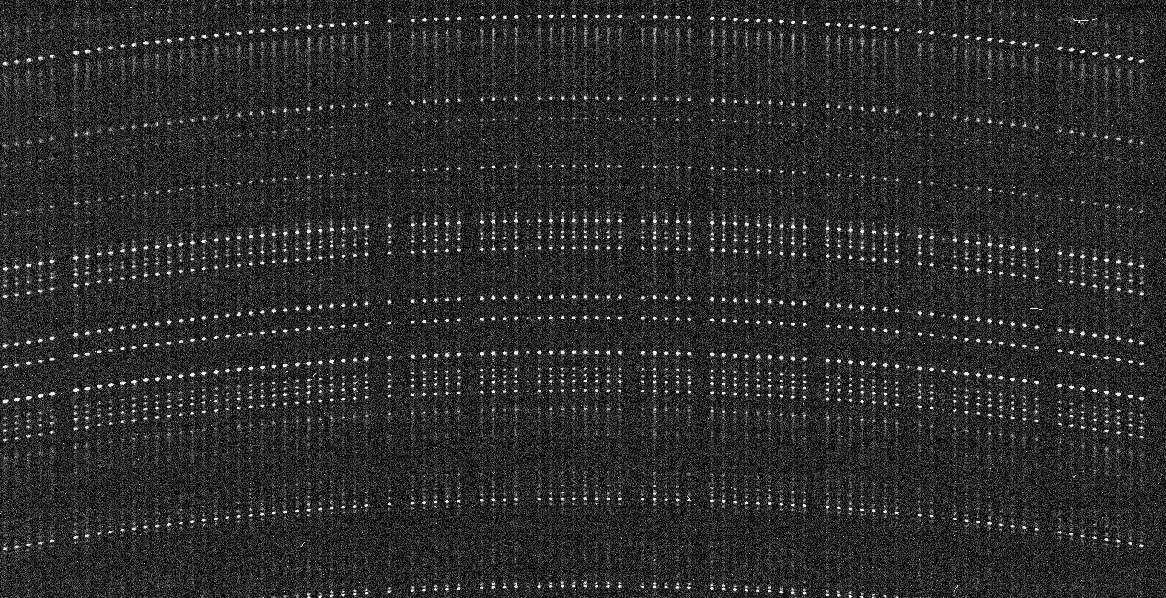
The image below is from the 600@10.1 grating, centered at 5600 Å. At the center of the chip the images have a FWHM of about 2.2 pixels (these are binned 2x2, so each pixel is 24 &mu.) The variation from the blue end of the spectrum to the red end is only about 0.1 pixels, which respesents a coverage of over 2700 Å. (The image shown is only the middle part of the chip.)
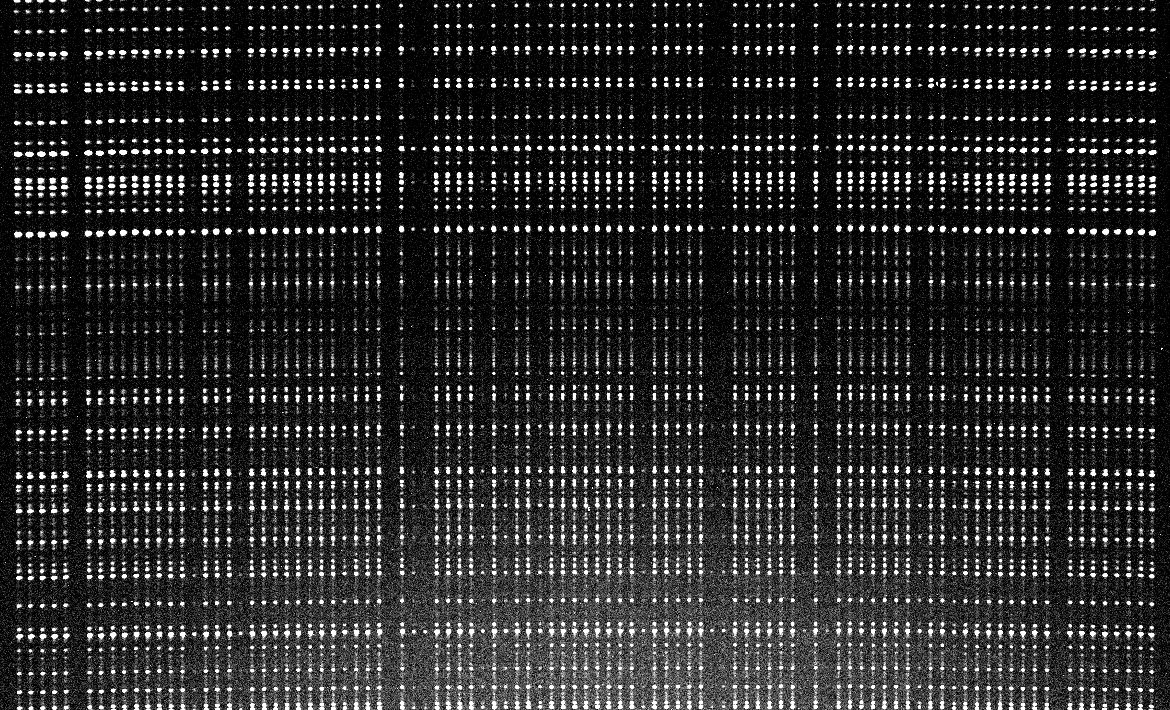
The images below show "line plots" of dome flats using the Red fiber cable with the new collimator and with the old collimator. Due to the optical design of the new collimator that puts the pupil at the entrance of the camera, the uniformaity of the flat is generally more uniform, i.e. less fall off at either the right (top fibers) or the left (bottom fibers).
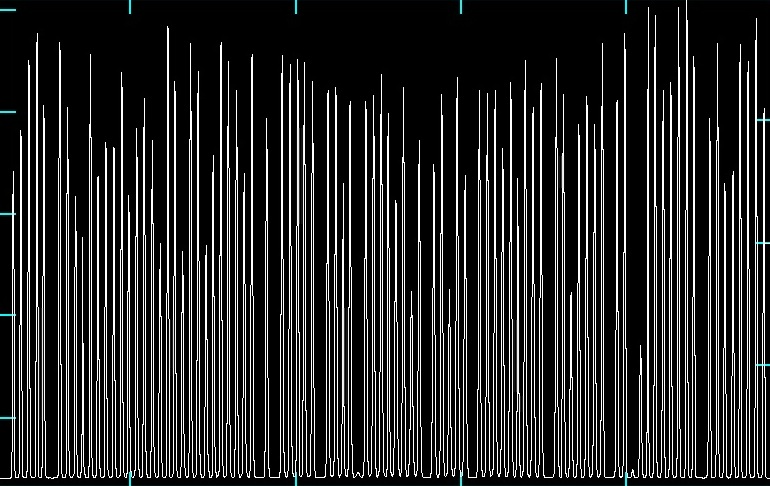
New collimator 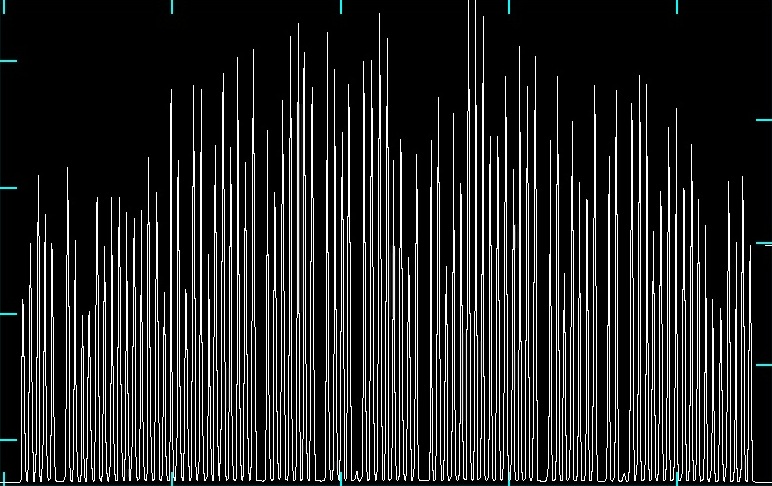
Old collimator The diagram below shows the wavelength dependence of both the collimator and the BSC camera focus settings. These adjustments are always made during the instrument setup. The bottom part shows the image quality acheivable with the Echelle and the Red (200 micron fibers) for the Fiber position and camera focus on the upper curves.
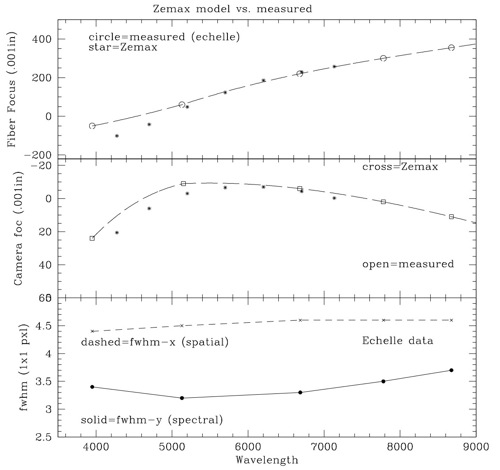
Because the STA1 CCD only has 2600 pixels of 12 microns each in the spatial direction, observers wishing to use the Simmons Camera instead of the BSC should be advised that apporximately 15 fibers corresponding to the top and bottom of the fiber foot are not imaged onto the CCD. Since there are also several broken fibers, there will only be a total of 66 usable fibers per configuration.





Last modified: 03-Apr-2020 16:11:48 MST
- Observing at WIYN